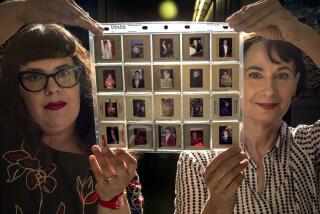The Devil’s Archives Are Closed : THE DEVIL AND DR. BARNES Portrait of an American Art Collector<i> by Howard Greenfeld; (Viking: $19.95; 284 pp., illustrated) </i>
- Share via
The Barnes Foundation in Merion, Pa., a suburb of Philadelphia, contains one of the finest and most extensive collections of impressionist and early modernist painting in the world. The collection was assembled in the first four decades of the century by Dr. Albert C. Barnes, a self-made pharmaceutical millionaire celebrated for his art collection, his art theories and his temper. Until his death in 1951, Barnes carried out well-publicized feuds with numerous institutions and individuals who did not share his tastes or ideas and to whom he addressed his famous, insult-laden letters. Throughout his lifetime, and after his death, one subject of dispute was that of access to his collection. Entry was largely limited to students enrolled at the foundation in courses in art appreciation taught according to the “Barnes Method.” Admission to these courses was severely restricted, and Barnes made a special point of refusing access to art critics, art historians, and museum professionals (one art historian, desperate to see the collection, gained admittance by dressing in livery and accompanying Albert Einstein as his chauffeur). A decade after Barnes’ death, the foundation was forced to open its doors to the public. It is now open two days and one afternoon a week, to a limited number of visitors.
Barnes’ immoderate temper occasioned the title of Howard Greenfeld’s biography, “The Devil and Dr. Barnes.” The second published biography of Barnes, Greenfeld’s suffers from the same restrictions as did the first. Because the Barnes Foundation refused Greenfeld access to its records and files, and because Barnes’ friends and supporters withheld comment (his enemies were eager to reminisce), Greenfeld is unable to give any intimate sense of his subject and is limited to a straightforward, factual account of the doctor’s life. Greenfeld describes Barnes’ relations with his enemies and friends (his closest friends were painter William Glackens, educator and reformer John Dewey, and actor Charles Laughton), and provides many amusing anecdotes. Nevertheless, Barnes and those he encountered remain distant. It is odd that the theory of art Barnes so vigorously defended is barely touched upon.
More to Read
The biggest entertainment stories
Get our big stories about Hollywood, film, television, music, arts, culture and more right in your inbox as soon as they publish.
You may occasionally receive promotional content from the Los Angeles Times.










